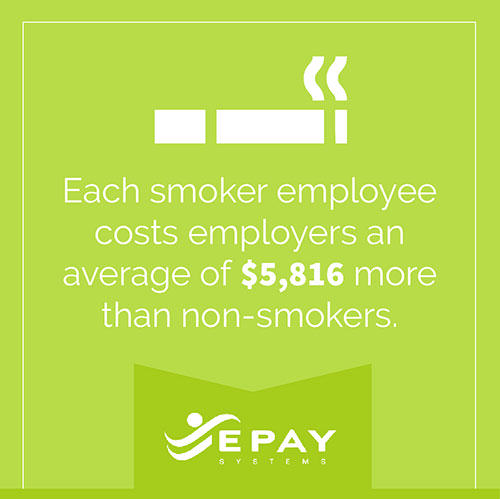What Is Time Theft?
Time theft occurs when an employee is paid for work they have not actually done, or for time they were not actually at work. And with today’s growing mobile workforce and easy access to the internet, time theft is an even bigger issue for employers today. So big, that it is costing billions of dollars in lost productivity annually.
Employee Time Theft Statistics You Should Care About
According to a Robert Half International study, employers lose about 4.5 hours every week per employee to time theft. A different study by Software Advice also reported that 1 out of every 4 employees admit to exaggerating their time worked 75% of the time.
Employee Time Theft Happens in Many Ways
But time theft is not confined to any one type of person, title or industry. It also comes in may different shapes and forms. Some of the most common ways employees steal time include:
- fudging their time on time sheets or waiting to punch out
- buddy punching
- taking long lunches or extended breaks
- using company time for personal activities
- spending time on the internet
- starting late
- and more!
Top 7 Ways Employees Commit Time Theft
1. Beat the (Time) Clock
It’s not uncommon for employees to fudge their time or round down their minutes when completing paper time sheets. In fact, it probably happens more often than not. Some employees even find ways around electronic timekeeping systems—like waiting to punch out until the next quarter hour.
2. Buddy Punching
Buddy punching is a big problem for many employers. It’s where one friend punches in for another—even those with time clocks. It’s often as easy as one employee giving his swipe card to a pal so she can punch in on his behalf.
The problem is even worse for employers that track time via paper timesheets, as it’s almost too easy for one employee to sign in for a friend.
Buddy punching can be prevented, however—thanks to the advancement of biometrics. There are many time clocks on the market that can read individual faces, fingerprints and handprints.
3. Long Lunches and Extended Breaks
Extending authorized meal times and breaks is another common form of time theft. A 30 minutes lunch can easily turn into a 45 minute lunch, especially when employees are not required to clock out for their lunch breaks.
Particularly costly are smoke breaks. According to a recent study by Ohio State University, each smoker costs employers an average of $5,816 more than non-smokers, largely due to breaks and lost productivity[i].
4. “Goofing Off”
Employees face a wide variety of temptations throughout the workday, which can amount to lost work time. This includes:
- Too much socializing/chatting
- Excessive personal phone calls
- Unauthorized or extended breaks
- Napping on the job (29% of workers report falling asleep while at work, according to a National Sleep Foundation survey[ii])
5. Beware of the Internet
The Internet creates unique challenges for employers, especially with the advent of smartphones and tablets. Too many employees spend too much time:
- Checking personal email
- Online shopping
- Playing games online
- Operating another business on company time
- Using social media
Social media is a big culprit for time theft. Productivity drops by 1.5% when staff can access Facebook at work, according to a study by Nucleus Research. 61% of surveyed employees use the site at work for 15 minutes per day.[iii]) But Facebook isn’t the only site out there. From LinkedIn to Twitter, Instagram to Pinterest…the list goes on. Social media is a major employee distractor and a popular form of time theft.
6. Swipe Card Shenanigans
Time clock swipe cards are supposed to be a time-tracking tool. Ironically, some employees use their swipe cards as a tool for not being tracked.
If you’re using time clocks with swipe cards, your managers probably hear plenty of excuses like this:
“I forgot my swipe card.”
“I lost my swipe card.”
“I didn't commit time theft, the time clock just wouldn’t take my swipe card.”
“So-and-so lost their time card, so I loaned them mine.”
7. Hide and Seek
When employees are on the move—drivers, landscapers, home health aides, for example—it’s especially difficult to know if they’re really where they’re supposed to be. They could stop at Starbucks for a few minutes, go home to let the dog out or not even show up to work at all all. If you don’t have checks and balances in place, it’s easy for workers to disappear off the radar. Often, employers don’t find out until a customer complains, or it becomes painfully clear that the work isn’t getting done.
Luckily for you, there are ways to prevent workforce time theft.
The Cost of Time Theft
The true cost of time theft goes beyond the direct cost associated with fraudulent hours or minutes employees report. While that can have a direct cost, employee time theft can impact the entire workforce by creating resentment and setting bad examples for good employees. Moreover, some of these behaviors can creep into the business’s overall ability to achieve its goals or service its customers.
How To Stop And Reduce Theft Of Company Time
There may be a number of factors that play into why time theft occurs. In order to reduce these occurrences there are a number of steps that managers can take:
- Make sure employees are clearly aware of the rules - while it may seem common sense that clocking in for someone else is inappropriate, it’s never a bad idea to remind employees that such actions are not allowed and can result in disciplinary action.
- Set expectations - if employees are not working when they should, it may be that they do not clearly understand their responsibilities. Downtime can be used in a variety of ways such as cleaning, organizing, checking in with clients, etc.
- Follow through with disciplinary procedures - while it’s okay to let minor hiccups slide every now and again, it’s important to not allow consistent time theft go unchecked. Following through with disciplinary procedures can prevent bad behavior from turning into a habit.
- Set a good example - people and employees tend to replicate the behavior of those around them. If, for example, employees see management consistently taking extended breaks, they may see that as the norm. Setting a good example will instill the proper standards of behavior in the work environment.
- Implement time tracking software - using a time-tracking and attendance software can help automate many processes for tracking employee work performance and can be an indespensable tool for remote employees.

Prevent Employee Time Theft With EPAY
At EPAY, thwarting time theft is all in a day’s work. As the leading provider of time and attendance systems for employers with distributed workforces—the ones that are the toughest to track and particularly vulnerable to time theft. We offer a range of data collection options, such as employee time tracking software, which allow employers to track and manage employees in virtually every work environment while routing out time theft in its many devious forms. Staying on top of time theft helps reduce your labor budget. Learn more time theft mitigation with our human capital management software.

